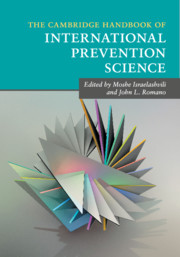Book contents
- The Cambridge Handbook of International Prevention Science
- The Cambridge Handbook of International Prevention Science
- Copyright page
- Dedication
- Contents
- Figures
- Tables
- Contributors
- Foreword
- Acknowledgments
- The Nature of Prevention Science
- Part I The Essence of Prevention Science
- Part II The Globalization of Prevention Science
- Asia & Australia
- North, Central, & South America
- Europe
- 34 Paving the Way for Prevention Science in Croatia
- 35 Stress Prevention among German Teachers
- 36 Prevention and Schooling in Italy
- 37 Cultural Adaptation of Family Evidence-Based Drug Prevention Programs in Spain
- 38 Youth Risk Behavior Prevention Based on Positive Relationships
- 39 Interventions to Promote Positive Parenting in Spain
- Africa & the Middle East
- The Future of Prevention Science
- Index
- References
35 - Stress Prevention among German Teachers
from Europe
Published online by Cambridge University Press: 21 January 2017
- The Cambridge Handbook of International Prevention Science
- The Cambridge Handbook of International Prevention Science
- Copyright page
- Dedication
- Contents
- Figures
- Tables
- Contributors
- Foreword
- Acknowledgments
- The Nature of Prevention Science
- Part I The Essence of Prevention Science
- Part II The Globalization of Prevention Science
- Asia & Australia
- North, Central, & South America
- Europe
- 34 Paving the Way for Prevention Science in Croatia
- 35 Stress Prevention among German Teachers
- 36 Prevention and Schooling in Italy
- 37 Cultural Adaptation of Family Evidence-Based Drug Prevention Programs in Spain
- 38 Youth Risk Behavior Prevention Based on Positive Relationships
- 39 Interventions to Promote Positive Parenting in Spain
- Africa & the Middle East
- The Future of Prevention Science
- Index
- References
- Type
- Chapter
- Information
- The Cambridge Handbook of International Prevention Science , pp. 827 - 849Publisher: Cambridge University PressPrint publication year: 2016



